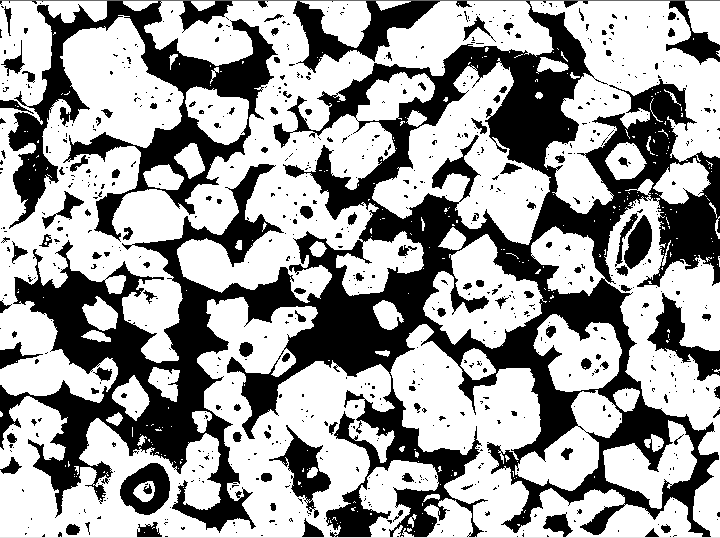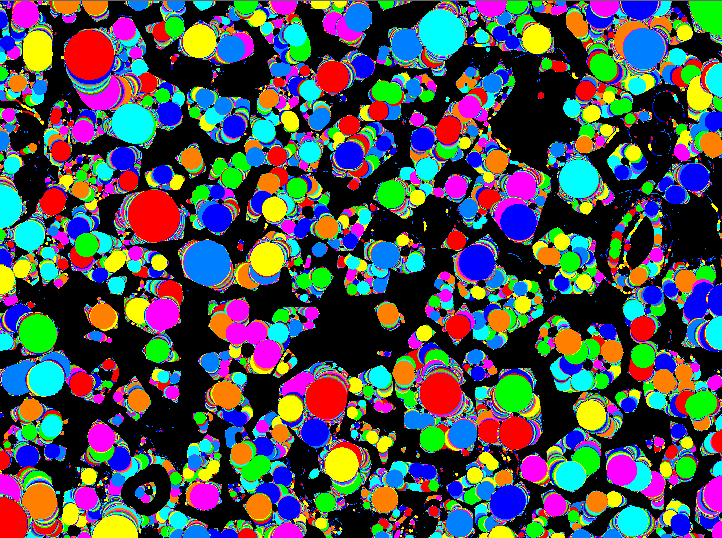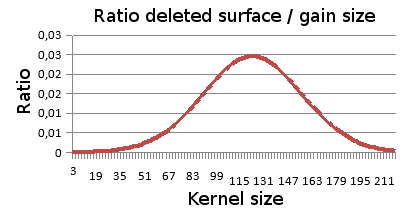Granulometry based on successive openings
When it is impossible to correctly separate the objects in an image, the granulometry based on successive openings prove to be very useful. The main issue of this approach is its rather important calculation time. The use of extremely fast IPSDK morphological operations allows to free the process from this drawback.
Moreover, it is possible to use this algorithm on 3D and large 2D images thanks to these accelerations. Finally, the use of an exact distance map allows to apply perfectly circular structuring elements and thus improve the measure accuracy.
 Initial image
Initial image  Granulometry based on successive openings result
Granulometry based on successive openings result Ratio between the deleted surface and the whole grain surface depending on the kernel size
Ratio between the deleted surface and the whole grain surface depending on the kernel size